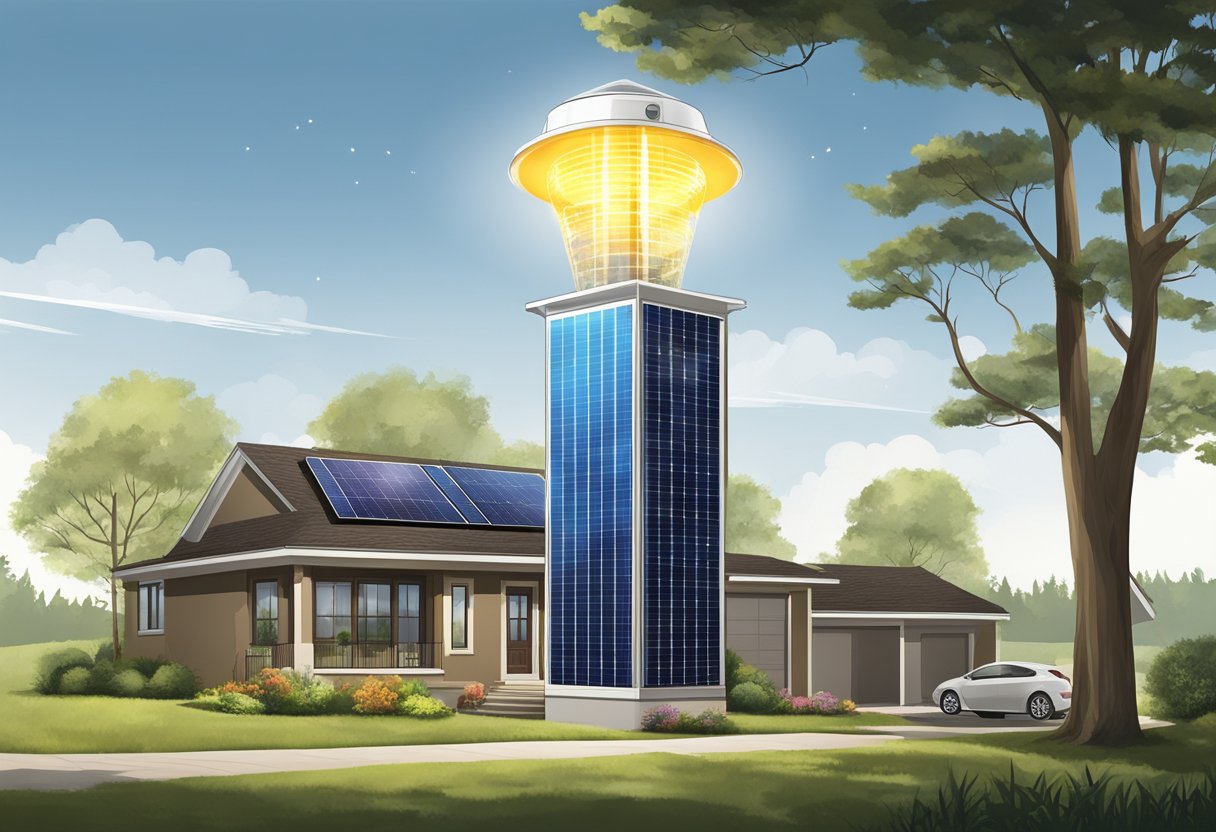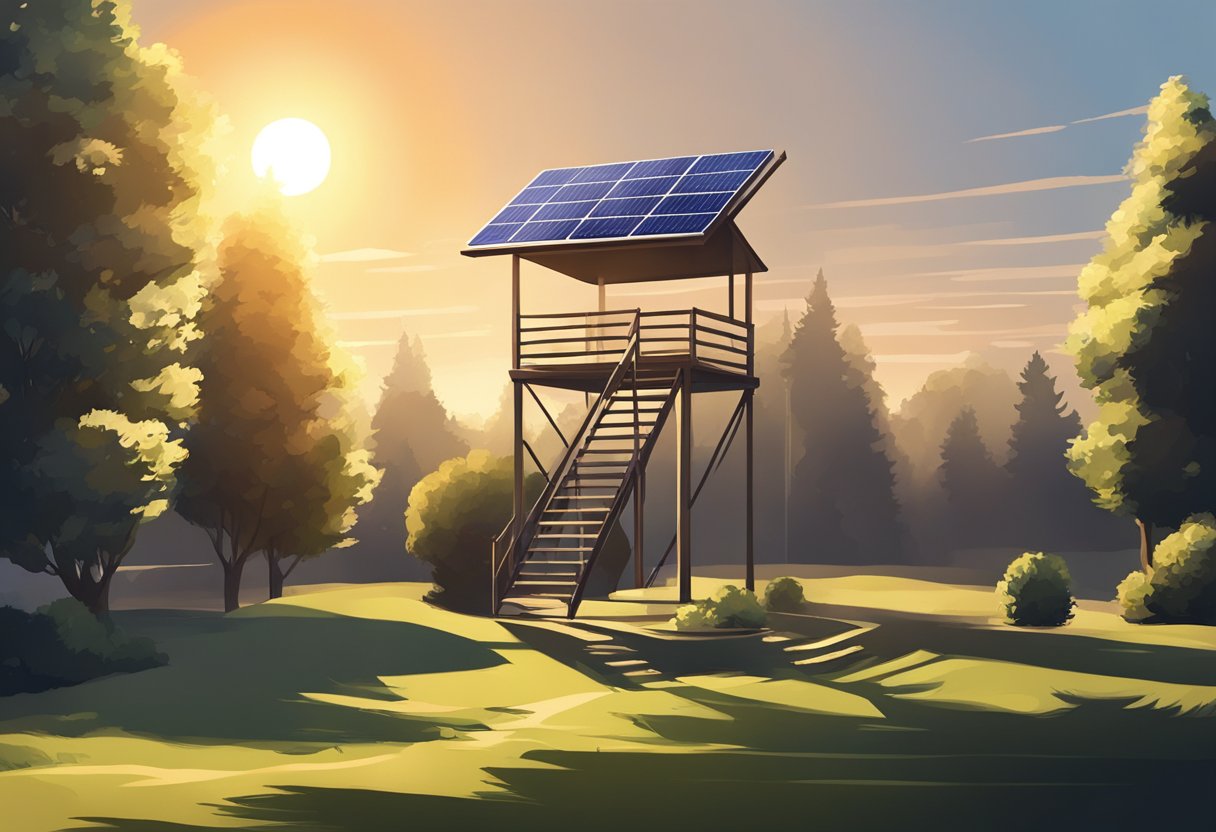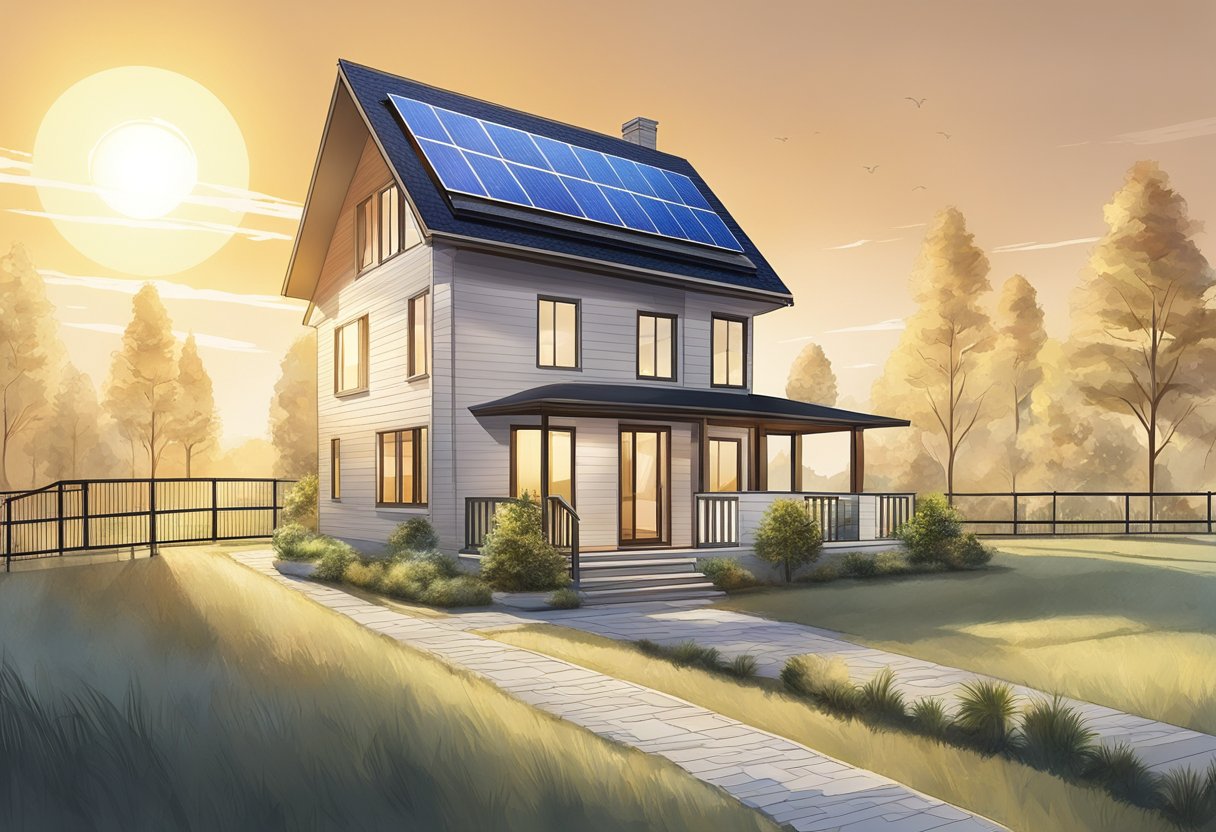Solar energy is one of the most promising forms of renewable energy. It is sustainable, clean, and can be harnessed in many ways.
One of the most efficient ways to harness solar energy is through the use of solar towers.
Solar towers are tall structures that use mirrors or lenses to focus sunlight onto a central receiver, which then converts the energy into electricity.
While solar towers are typically used in large-scale commercial applications, there is growing interest in using them for residential purposes.
A solar tower for home use can provide a significant amount of electricity, reducing reliance on the grid and lowering energy bills.
However, there are several factors to consider when designing and installing a solar tower for residential use, including the size and location of the tower, as well as the economic and environmental impact.
Understanding Solar Towers
Solar towers are designed to capture and concentrate sunlight, using mirrors or lenses to reflect and focus the light onto a central receiver. The receiver then converts the energy into heat, which can be used to generate electricity.
Solar towers are highly efficient, with the potential to generate large amounts of electricity from a relatively small footprint. However, they require a significant investment in terms of design, construction, and maintenance.
Design and Installation
Designing and installing a solar tower for residential use requires careful planning and consideration.
Factors such as the size and location of the tower, as well as the orientation and angle of the mirrors or lenses, must be taken into account.
In addition, the tower must be designed to withstand wind, weather, and other environmental factors.
Finally, the tower must be connected to the grid or a battery storage system, to ensure that excess energy can be stored or sold back to the utility company.
Key Takeaways
- Solar towers are an efficient way to generate electricity from sunlight, but require careful planning and consideration when designing and installing for residential use.
- A solar tower for home use can provide a significant amount of electricity, reducing reliance on the grid and lowering energy bills.
- Factors such as size, location, and economic and environmental impact must be considered when designing and installing a solar tower for residential use.
Understanding Solar Towers

Solar towers are a type of solar power plant that uses mirrors to concentrate the sun’s energy onto a tower. This energy is then used to generate electricity.
Solar towers are an increasingly popular form of renewable energy, and they are becoming more common in homes and businesses around the world.
Components of a Solar Tower
A solar tower typically consists of several components, including heliostats, a tower, a receiver, and mirrors.
Heliostats are computer-controlled mirrors that track the sun’s position on two axes. These mirrors are set up in a field and reflect sunlight onto a receiver at the top of the tower.
The tower is the central component of the solar power plant. It is usually made of steel and stands several hundred feet tall.
The receiver is located at the top of the tower and is responsible for collecting the concentrated sunlight. The mirrors are positioned around the tower and reflect sunlight onto the receiver.
How Solar Towers Work
The process of generating electricity from a solar tower involves several steps.
First, the heliostats reflect sunlight onto the receiver at the top of the tower. This concentrated sunlight heats up a fluid, such as water or molten salt, that is flowing through the receiver.
The heated fluid is then used to generate steam, which drives a turbine to generate electricity. The steam is then condensed back into water and the process starts again.
Solar towers are an efficient and reliable way to generate electricity from the sun. They are also environmentally friendly, as they do not produce any greenhouse gases or other pollutants.
As solar technology continues to improve, solar towers are likely to become even more popular in the future.
Design and Installation
Site Selection
Choosing the right location for a solar tower is crucial for its optimal performance.
The site should receive ample sunlight throughout the day, without any shading from trees or buildings. The landscape should be flat, and the soil should be stable enough to support the tower’s weight.
It is recommended to consult with a solar installer or mapping service to determine the best location for the tower.
Solar Tower Design Considerations
When designing a solar tower for home use, there are several factors to consider.
The tower’s capacity should be determined based on the household’s energy needs and the amount of sunlight the site receives.
The tower’s modular design allows for easy installation and expansion, making it a flexible solution for homes of different sizes.
The number and size of solar panels should also be considered, as they affect the tower’s efficiency and overall cost.
Installation Process
The installation process for a solar tower typically involves the following steps:
- Site preparation: The site is cleared of any obstacles and leveled to ensure a stable foundation for the tower.
- Tower assembly: The tower is assembled on-site, and the solar panels are mounted onto the tower’s modules.
- Electrical wiring: The tower is connected to the household’s electrical system, and the wiring is tested to ensure proper functioning.
- Commissioning: The tower is tested to ensure it is generating the expected amount of power, and any issues are addressed.
It is recommended to hire a professional solar installer for the installation process, as they have the expertise and equipment to ensure a safe and efficient installation.
Economic Aspects

Cost Analysis
The cost of installing a solar tower for home use depends on various factors such as system size, location, and the type of solar tower.
According to Investopedia, as of 2017, the cost for utility-scale photovoltaic (PV) solar power had dropped to $0.06 per kilowatt-hour (kWh), while cost targets for residential and commercial-scale solar had dropped to $0.16 and $0.10 per kWh, respectively.
The cost of a solar tower system for home use can vary between $15,000 to $35,000, depending on the size of the system.
It is important to note that while the initial cost of installing a solar tower system may seem high, it can provide significant savings in the long run by reducing or eliminating electricity bills.
Incentives and Tax Credits
There are various incentives and tax credits available for those who want to switch to solar energy.
The federal government offers a tax credit of up to 26% of the total cost of the solar system, which can significantly reduce the upfront cost of installing a solar tower for home use.
Moreover, some states also offer additional incentives and tax credits for those who switch to solar energy.
For instance, California offers a solar rebate program that provides rebates ranging from $2,000 to $10,000 for residential solar installations, depending on the size of the system.
Going Solar
Going solar can be a great investment for homeowners, as it can provide significant savings in the long run by reducing or eliminating electricity bills.
Moreover, switching to solar energy can also help reduce carbon emissions and promote a cleaner environment.
There are various options available for those who want to switch to solar energy, including solar leases and power purchase agreements (PPAs).
These options allow homeowners to install a solar system without paying the upfront cost of the system. Instead, they pay a monthly fee to the solar company and receive the benefits of solar energy.
Price per Watt
The price per watt of a solar tower system can vary depending on various factors such as the size of the system and the type of solar tower.
According to a research paper by ResearchGate, the price per watt of solar energy has dropped significantly in recent years, making it a more affordable option for homeowners.
Environmental Impact and Efficiency

Renewable Energy Contribution
Solar towers are an excellent source of renewable energy that can be used for home use. They are efficient in converting sunlight into electricity, and they do not emit greenhouse gases, making them an environmentally friendly option.
By using solar towers, households can reduce their reliance on fossil fuels, which are known to contribute to pollution and environmental degradation.
Environmental Concerns
While solar towers are an excellent source of renewable energy, they do have some environmental concerns.
The construction of solar towers can lead to habitat destruction and the displacement of wildlife. However, these concerns can be mitigated by careful planning and siting of solar towers.
Additionally, the manufacturing of solar panels can lead to the emission of greenhouse gases, but this is offset by the fact that solar towers do not emit greenhouse gases during their operation.
Another concern is the amount of space that solar towers occupy. However, this can be addressed by using rooftop solar panels, which do not require any additional land.
Rooftop solar panels are also more efficient as they are closer to the source of sunlight.
Challenges and Considerations

Technical Limitations
While solar towers are a promising technology for generating electricity from the sun, there are some technical limitations that should be considered before installing one for home use.
One of the main limitations is the amount of energy that can be generated. Solar towers require a certain amount of solar flux to generate electricity, and this can be affected by factors such as shade and the curve of the tower.
Additionally, solar towers require a significant amount of space, which may not be feasible for some homeowners.
Solar Tower Versus Rooftop Solar
When considering whether to install a solar tower or rooftop solar panels, there are several factors to consider.
Rooftop solar panels are typically less expensive to install than a solar tower, and can be more efficient at generating electricity.
Additionally, rooftop solar panels can be installed on most homes, regardless of the amount of available space.
However, solar towers have some advantages over rooftop solar panels.
For one, solar towers can generate more electricity than rooftop solar panels, making them a better choice for homes with high energy needs.
Additionally, solar towers can be more effective at generating electricity during peak energy usage times, when demand for electricity is highest.



